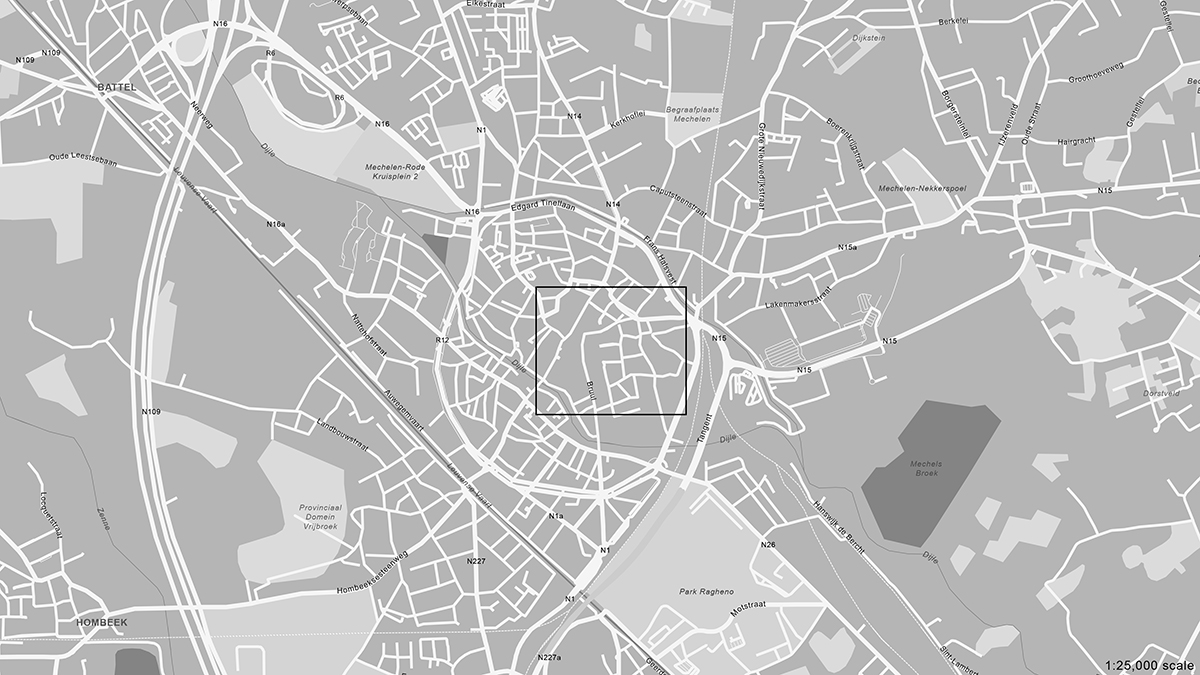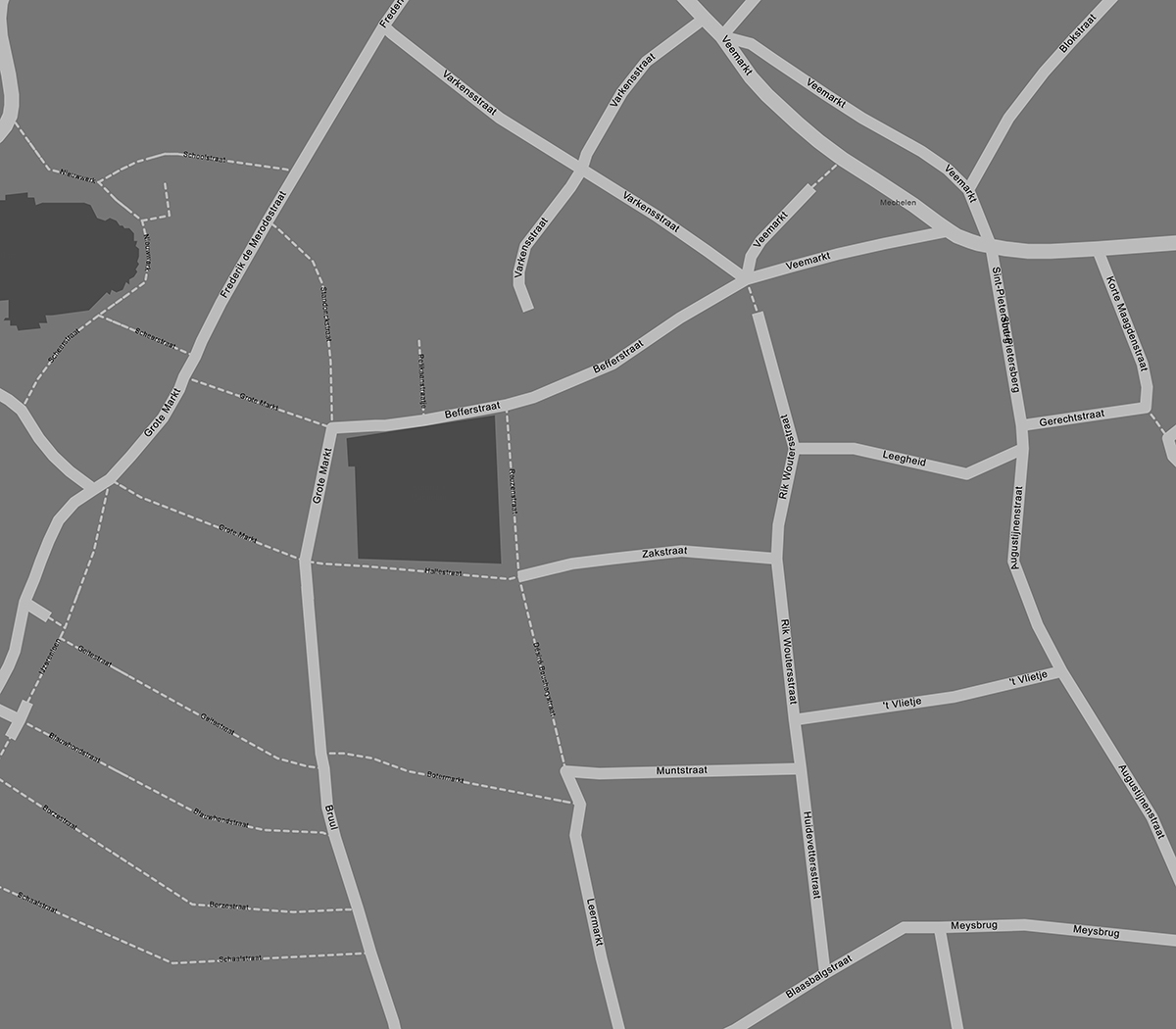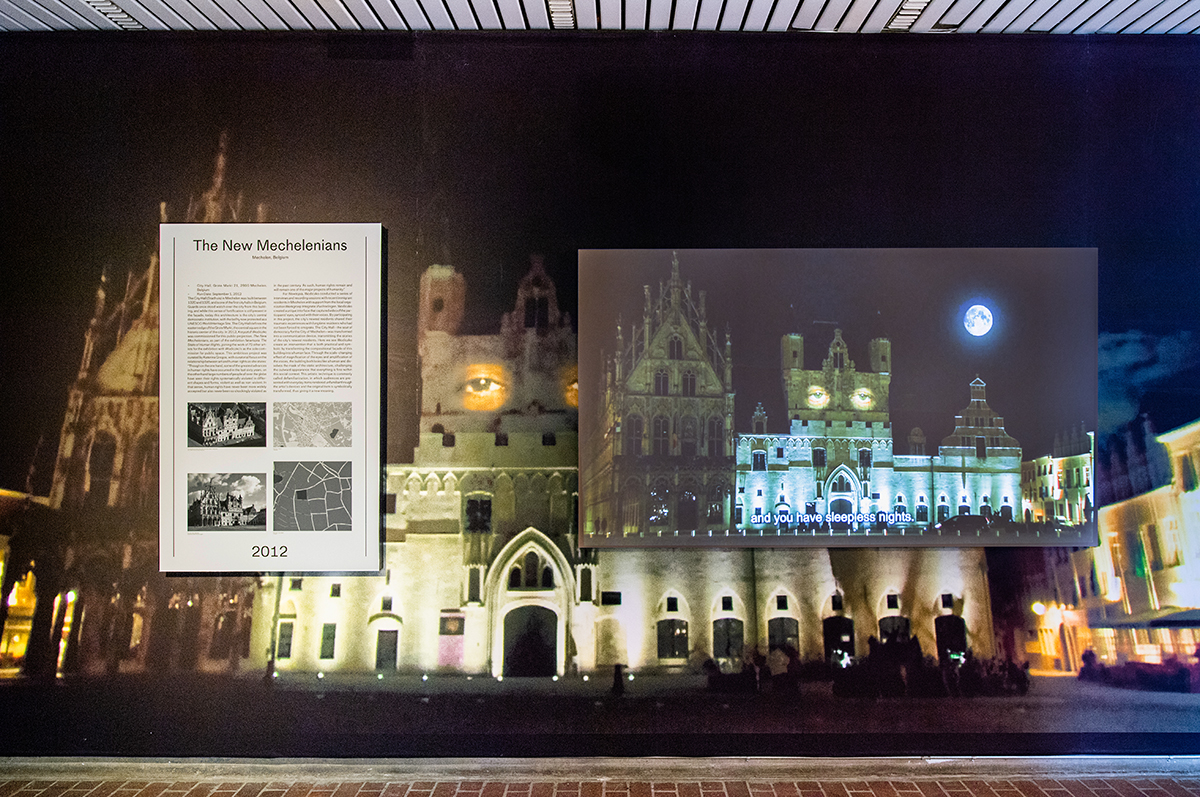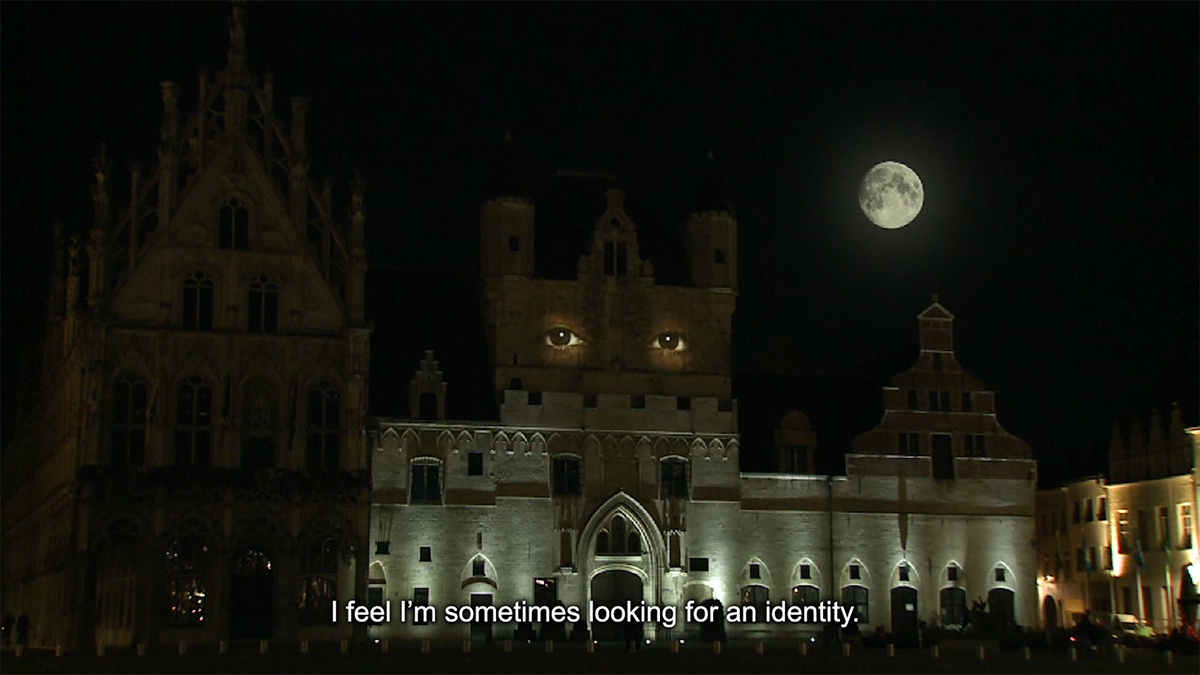Interrogative Design: Selected Works of Krzysztof Wodiczko – The New Mechelenians
For the duration of the Interrogative Design exhibition, we will be providing expanded online content to give viewers a deeper access to selected projects. Materials for this exhibit provided by the artist, with unique edits specially produced for this project by GSD Exhibitions.
The New Mechelenians, 2012, Mechelen, Belgium
• City Hall, Grote Markt 21, 2800 Mechelen, Belgium
• Run Date: September 1, 2012
The City Hall (Stadhuis) in Mechelen was built between 1320 and 1326, and is one of the first city halls in Belgium. Guards once stood watch over the city from this building, and while this sense of fortification is still present in the facade, today this architecture is the city’s central democratic institution, with the belfry now protected as a UNESCO World Heritage Site. The City Hall defines the eastern edge of the Grote Markt, the central square in the historic center of the city. In 2012, Krzysztof Wodiczko was commissioned for this public projection, The New Mechelenians, as part of the exhibition Newtopia: The State of Human Rights, joining the work of 70 other artists for the exhibition with Wodiczko’s as the sole commission for public space. This ambitious project was curated by Katerina Gregos, with curatorial focus on the relationship between art and human rights as she states: “Though on the one hand, some of the greatest advances in human rights have occurred in the last sixty years, on the other hand large numbers of people all over the globe have seen their rights systematically violated in different shapes and forms, violent as well as non-violent. In that sense, human rights have never been more widely accepted but also never been so shockingly violated as in the past century. As such, human rights remain and will remain one of the major projects of humanity.”
For Newtopia, Wodiczko conducted a series of interviews and recording sessions with recent immigrant residents in Mechelen with support from the local organization Werkgroep Integratie Vluchtelingen. Wodiczko created a unique interface that captured video of the par-ticipants’ eyes, synced with their voices. By participating in this project, the city’s newest residents shared their traumatic experiences with longtime residents who had not been forced to emigrate. The City Hall—the seat of democracy for the City of Mechelen—was transformed into a communication device, transmitting the stories of the city’s newest residents. Here we see Wodiczko create an intervention that is both practical and symbolic by transforming the compositional facade of this building into a human face. Through the scale-changing effect of magnification of the eyes and amplification of the voices, the building both looks like a human and dissolves the mask of the static architecture, challenging the outward appearance that everything is fine within this social context. This artistic technique is commonly called defamiliarization, in which audiences are presented with everyday items rendered unfamiliar through the artist’s devices and the original item is symbolically transformed, thus giving it a new meaning.



